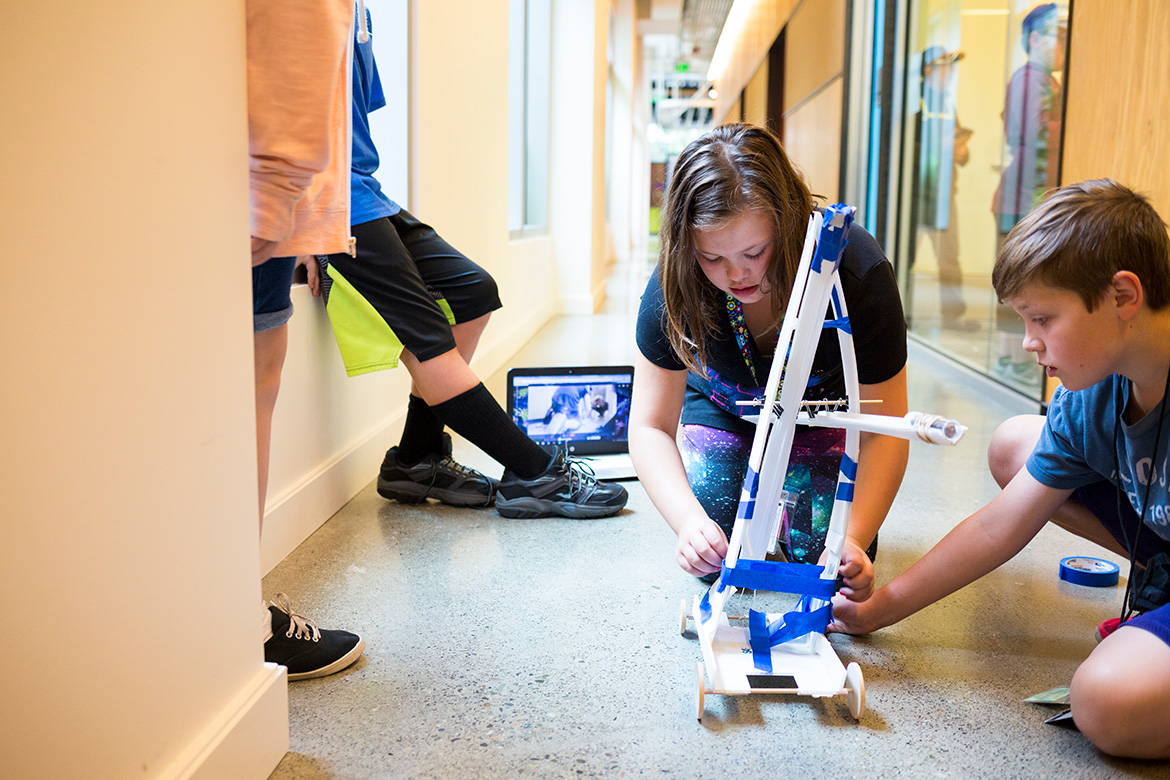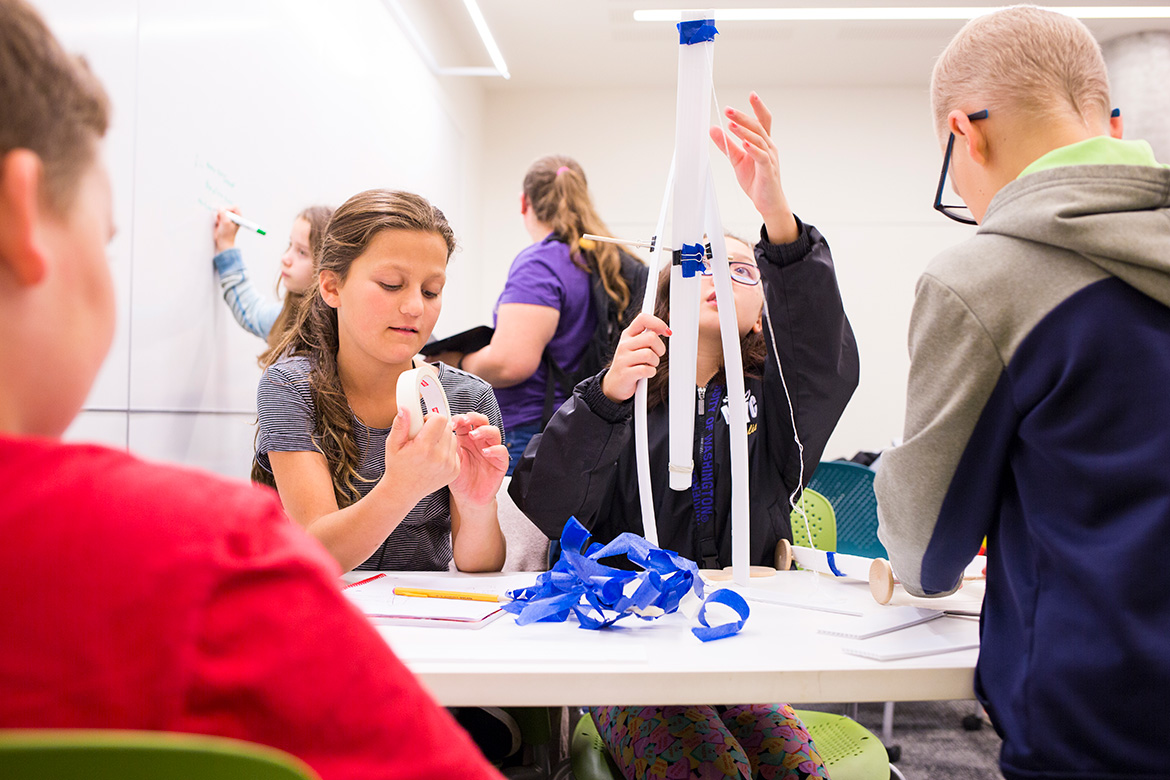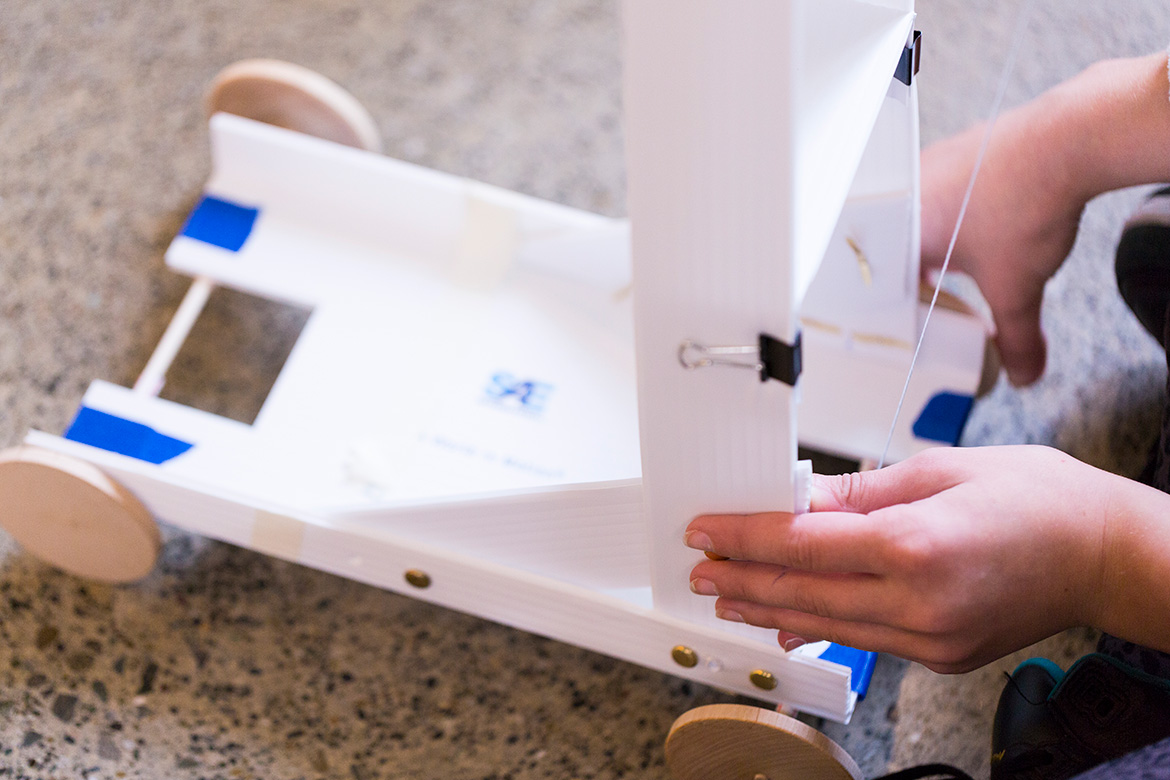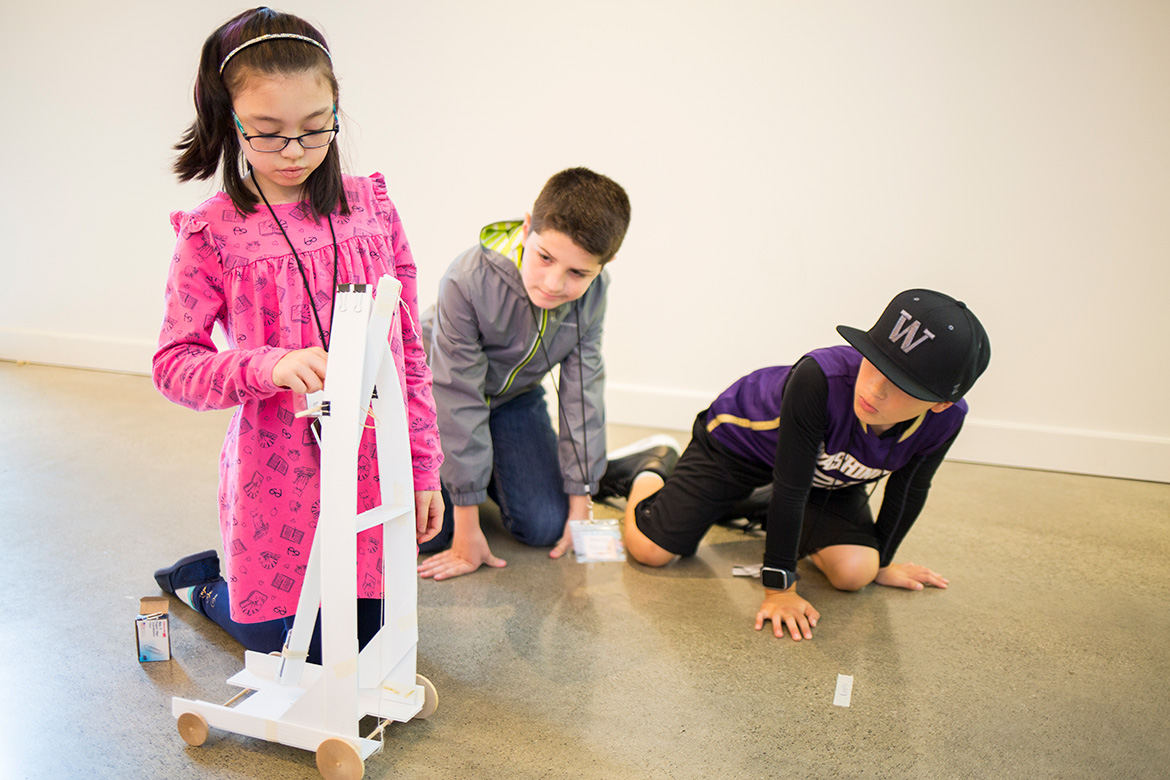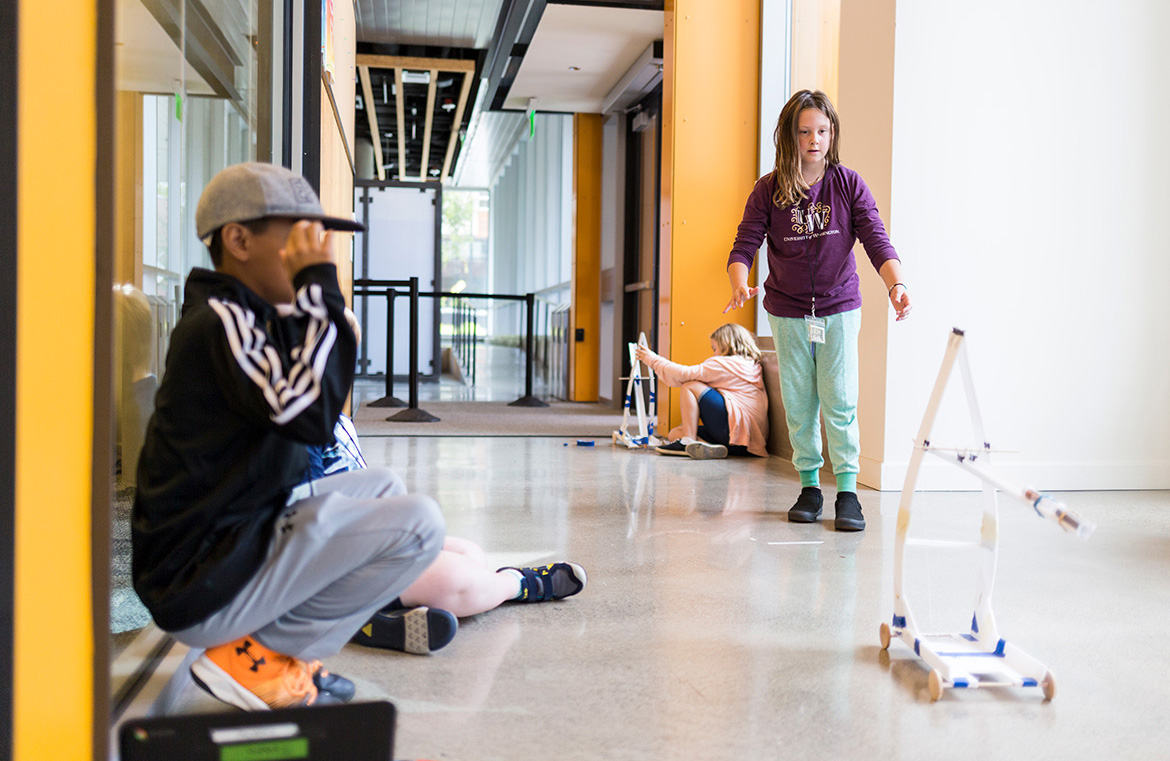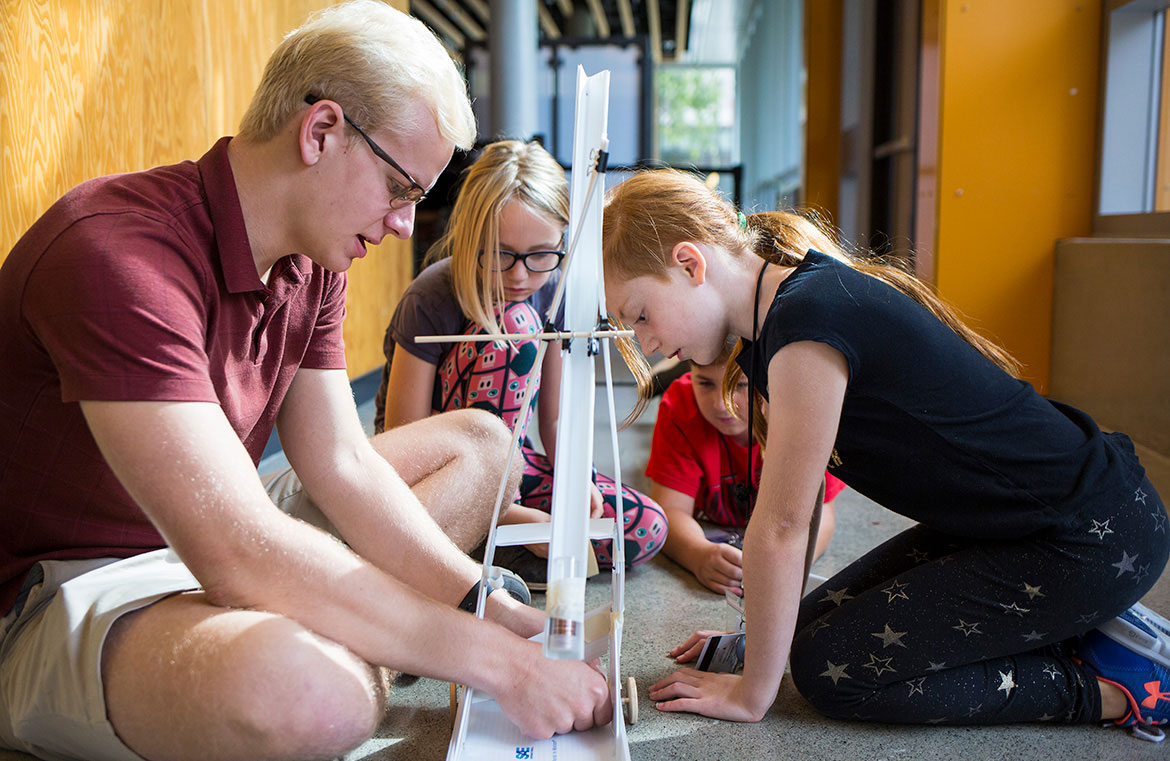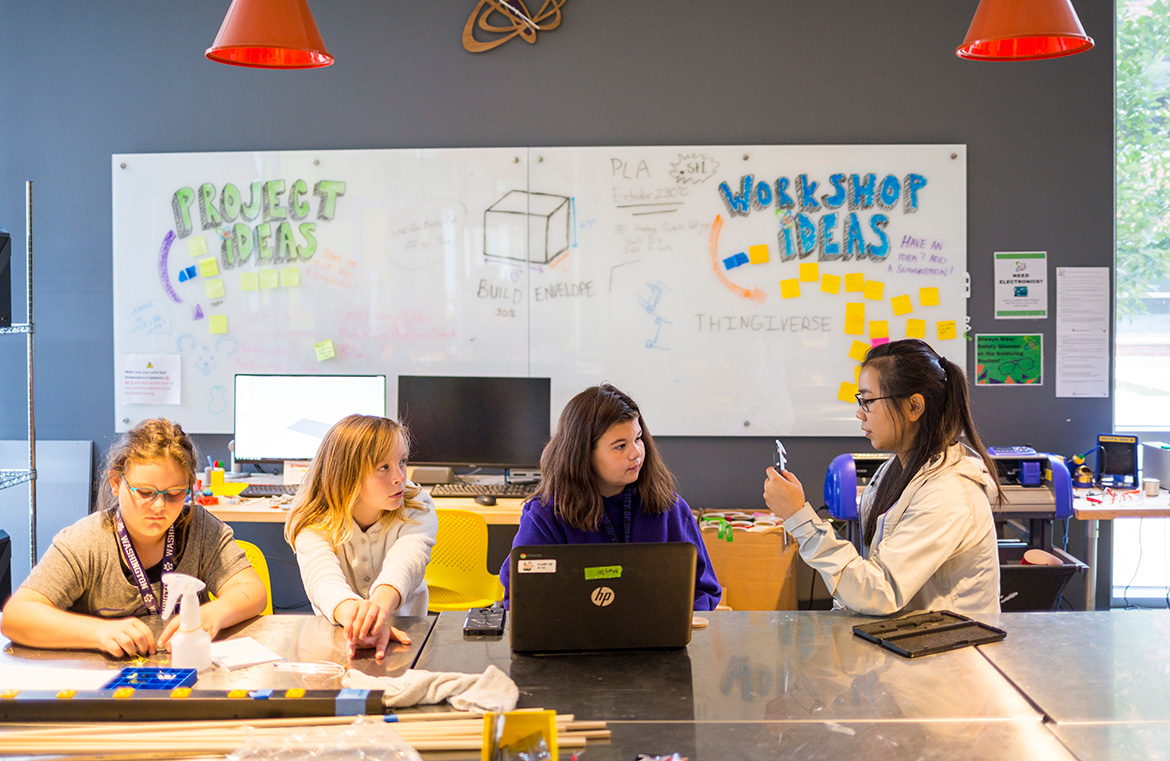By Chelsea Yates
Photos by Mark Stone / University of Washington
Fifth graders from Marysville, Washington, started this school year as engineers, thanks to ME professor Brian Fabien and his students.
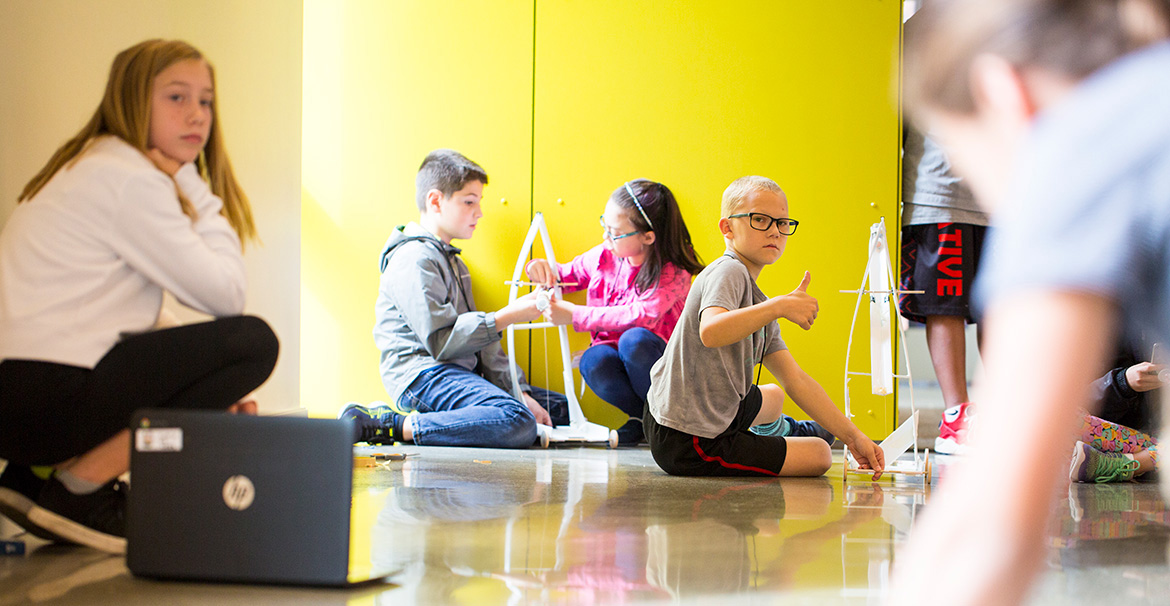
Thumbs up! A fifth grader signals to his team that their car is ready to test.
For a week in September, Maple Hall’s Area 01 buzzed with the energy of 55 fifth grade mechanical engineers, data engineers and materials engineers. The students, all from the Marysville Cooperative Education Partnership at Marshall Elementary, worked in small teams to design, build and test gravity cars — hand-built cruisers that use weight and gravity to move.
By combining 3-D printed pieces with rubber bands, drinking straws, cardboard, metal clips, wooden wheels, painters tape, string and pennies (for weight) in just the right way, each team developed a car that would sail down the hall, with the goal of covering the most distance.
The fifth graders were at the UW as part of Engineering Week, a K-12 teacher-training program that helps teachers learn how to introduce engineering into their classes.
“Although engineering is a key part of K-12 STEM (science, technology, engineering and math) requirements, in Washington state there aren’t many opportunities for teachers to learn how to teach it,” says Brian Fabien, College of Engineering associate dean for academic affairs and mechanical engineering (ME) professor. Fabien developed the program three years ago with support from the National Science Foundation.
For the first year, the program invited only teachers to campus. After discussions with participants, Fabien decided to invite students and parents the next year, so the UW could model for teachers how to introduce basic engineering principles to kids. It also presented an opportunity to acquaint students and their parents with the university environment.
“Around fifth grade, students often start to lose interest in math and science,” Fabien explains. “So we want to intervene and show them that these subjects can be enjoyable.”
“We hope that Engineering Week encourages these fifth grade students to envision themselves as future engineers.”
Making engineering fun
The fifth graders spent their first week of school learning about engineering and living in the UW residence halls. In the mornings, they explored basic engineering concepts through activities related to their gravity cars. In the afternoons, they toured engineering labs and met with engineering student clubs.
To help teach the activities, Fabien enlisted ME students and members of the UW’s EcoCAR team. The Marshall students were given a framework for creating their gravity cars but were encouraged to improvise through their design and use of materials.
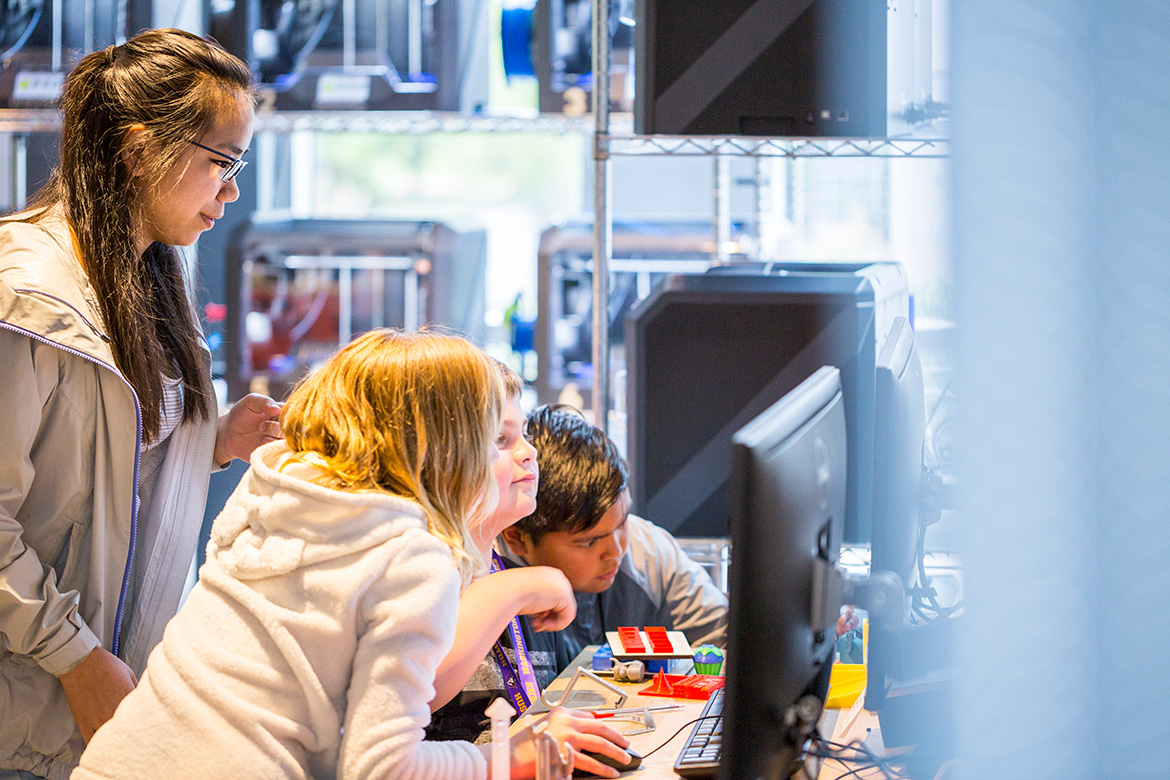
“Engineers have to learn how to work with failure because failure makes us into stronger problem-solvers and helps push us to improve our designs,” says Livia Anderson, left, as she instructs students on how to prepare a file for 3-D printing.
“Gravity cars are a great tool to introduce engineering concepts and processes,” says ME sophomore Livia Anderson, who serves as the propulsion systems integration lead this year for EcoCAR. “They are small cruisers that involve simple machines that are relatively easy to explain and play with. The fun starts when you put them together — things can get pretty complex.”
The fifth graders’ excitement resonated with Anderson; she was first introduced to engineering in middle school through MESA, an educational program that encourages kids early in math and science. “We had a competition in which we had to design and build wind turbines,” she remembers. “The hands-on nature of it was so challenging and fun, and because of it I decided that I wanted to be an engineer.”
ME junior Nikolas Johnson appreciates the opportunity to practice teaching basic engineering skills through Engineering Week.
“It challenges us engineering students to pare down the technical details related to engineering and make them accessible and engaging,” he says. “You might think you understand a concept like acceleration, or know how to run a 3-D printer, but then you have to explain it at a level that fifth graders will understand. It’s a great way to practice communication skills and extend our university classroom learning.”
Gravity cars provide the fifth graders with another important lesson: how to fail.
“The cars rarely work right from the start, so as with most engineering projects you have to learn how to see failure not as something discouraging but instead as a teaching tool,” Anderson explains. “Engineers have to learn how to work with failure because failure makes us into stronger problem-solvers and helps push us to improve our designs.”
Fabien sees benefit in connecting fifth graders — and their parents — with current engineering students.
“It’s easier for young people to imagine themselves as future engineers if they have access to people who seem more like them pursuing engineering,” he says. “It also gives their parents a chance to learn more and ask questions about the college experience.”
“Gravity cars are small cruisers that involve simple machines. The fun starts when you put them together — things can get pretty complex.”
The “gravity” of the situation
The Marshall students started designing their cars on Monday; by Thursday they were racing and on Friday — like any engineering team in college or industry might do — they presented their research findings to their peers.
“You set the bar really high to challenge the students, and they exceed it, every time,” says Fabien. “It’s always amazing to see what they produce in this very short week.”
Fabien hopes to expand the program in 2019 to include more schools from across the state, though he says doing so will require additional funding and partnership development.
“To execute a program like this requires a strong partnership between parents, teachers, school administration and the UW,” he says. “The parents, teachers and principal at Marshall have been superb partners. They see that this experience can be life-changing for their students.”
Johnson and Anderson are eager to apply skills they developed through Engineering Week to their UW activities. Johnson trains students to use equipment in the campus makerspaces Dabble Lab and The MILL so, he says, any chance to practice teaching and technical training is valuable. Anderson is excited to carry over the leadership and communications skills she developed through Engineering Week into her new lead role for EcoCAR.
“This year we’re beginning the EcoCAR Mobility Challenge, a new iteration of the EcoCAR project, in which we will be converting a 2019 Chevy Blazer into a self-driving hybrid electric vehicle,” she says. “So the more experience I can get facilitating teams and guiding conversations about problem-solving, the better.”
Although a penny-weighted gravity car may seem a far stretch from a self-driving EcoCAR, Fabien sees otherwise.
“We hope that Engineering Week encourages these fifth grade students to envision themselves as future engineers,” he says. “I hope to see them on the UW campus one day soon, in our classrooms and makerspaces, and leading our student clubs.”
Engineering Week is funded by a National Science Foundation grant, which pays for equipment as well as room and board for the students, teachers and parent chaperones for the week.
EcoCAR is supported at the UW by the Electrical and Computer Engineering and Mechanical Engineering departments.
For more information, contact Brian Fabien at fabien@uw.edu.
Originally published October 29, 2018
